Bee Identification
Updated: November 2023
Bee identification is not always simple, and it does take practice. I recall an interesting discussion years ago between two groups of bee experts who disagreed as to the identification of a bumble bee species - so you see, even experts don't always find it easy! Additionally, some species can only be accurately identified with the aid of a microscope.
For the non-expert, not only do some of the different bee species look very similar to each other, but they may also be confused with other insects, some of which, for a variety of reasons, even mimic particular bees (such as the Bee Fly).
Bee Identification Tips
So here are a few tips and features to look for (please note, a link to free ID charts can be found at the bottom of the page), and in particular, how to identify bees versus other insects.
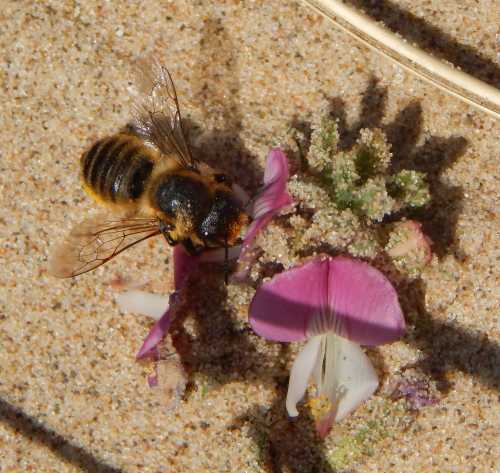 Coastal leafcutter bee on restaharrow.
Coastal leafcutter bee on restaharrow.
1. Check The Eyes and Antennae
Hover flies are often mistaken for bees and vice versa, so here, I'll draw attention to some key physical characteristics.
Eyes
Bees have eyes to the side of the face, resembling a kind of 'eclipse shape' when viewed from the side. (Bees actually have 5 eyes, 3 of them (the ocelli) are very small and on the top of the head and are more visible on photographs of some species).
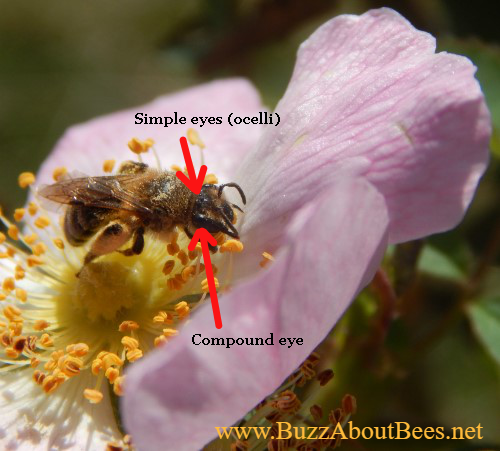 On this bee you can clearly see the eyes face out from the sides of the head.
On this bee you can clearly see the eyes face out from the sides of the head.Various hover fly species can be mistaken for bees, but look closely and you'll notice that the eyes are relatively large and forward facing, and are at the front of the head.
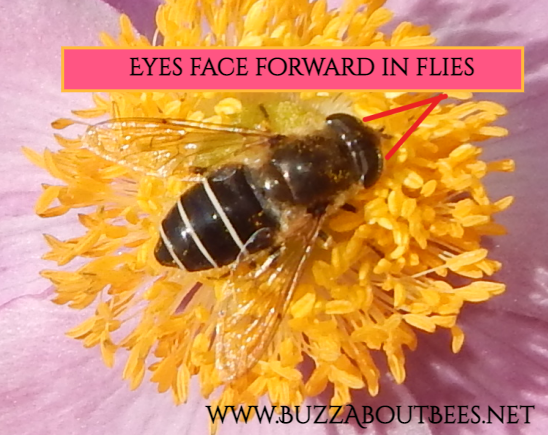 On this hover fly, the eyes are at the front of the head and are forward-facing.
On this hover fly, the eyes are at the front of the head and are forward-facing.Antennae
Note in the images above that bees also have visible, long antennae whereas the antennae of the hover fly are fairly inconspicuous.
2. Check Wings
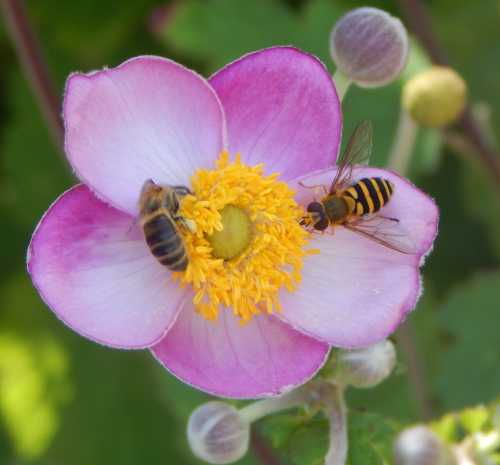 On the left - a honey bee, and on the right, a hoverfly foraging together on Japanese anemone.
On the left - a honey bee, and on the right, a hoverfly foraging together on Japanese anemone.
Bees have four single wings - two on each side of the body. Flies only have one set of wings.
However, please note that wasps also have two sets of wings (bees and wasps are related).
3. Check Pollen Carrying
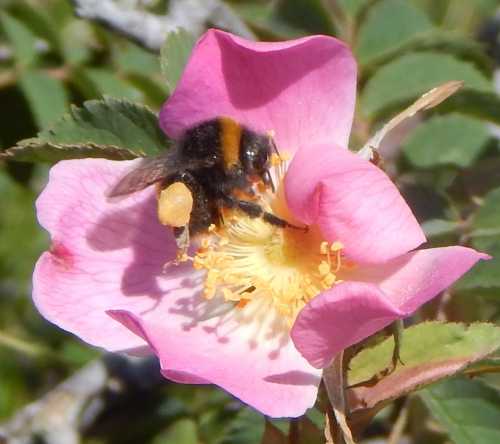 Bumble bee foraging on rose.
Bumble bee foraging on rose.If an insect is visibly carrying pollen, instantly you can be sure it is a bee.
However, absence of pollen does not necessarily mean the insect is not a bee! Ccuckoo species and male bees do not collect pollen.
A bee may be collecting other things, such as nest materials (like mud) or water, and a bee at the beginning of a foraging trip will have little pollen visible.
Bees Are Variable In Appearance!
It will help if you can broaden your view of what you think a bee should look like, because there is much variety.
Some solitary bees are very tiny, and mostly go about their business unnoticed by humans. Many look like small flies. such as Heriades truncorum - the Large headed resin bee pictured below.
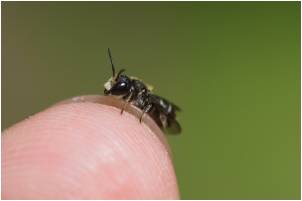 Heriades truncorum - Large headed resin bee
Heriades truncorum - Large headed resin beeThe Gooden's nomad bee arguably, looks a little like a small wasp.
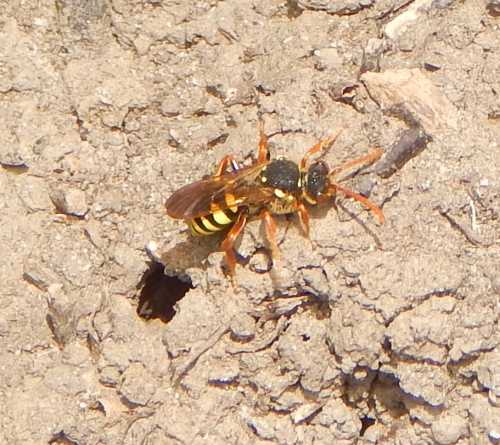 Gooden's nomad bee -Nomada goodeniana
Gooden's nomad bee -Nomada goodenianaBees come in a variety of colors - they can be black, orange, or brown, but they can also be violet, blue, red or green.
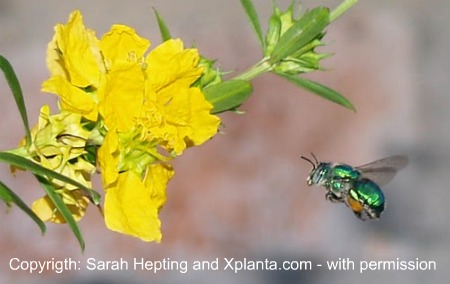 An Orchid Bee found in Mexico. With permission from Sarah Hepting and Xplanta.com
An Orchid Bee found in Mexico. With permission from Sarah Hepting and Xplanta.comConclusion
If you are seeking bee id charts which you can download for free, then go to my page Bee ID charts. However, the number of species covered will be very limited.
One
of the best things you can do if you are really
interested in bee identification, is to get a book.
A decent guide book will provide you with additional tips and hints covering a large number of species, with photographs.
Books you may wish to consider are:
- Wilson & Messinger Carril - The Bees In Your Backyard - by Wilson & Messinger-Carril
A superb book full of fascinating information about bees of North America.
- Field Guide to Bees Of Great Britain And Ireland - by Steven Falk.
- Britain's Insects - A Field Guide To The Insects Of Great Britain And Ireland by Paul D Brock
A brilliant book covering bees and other insects.
BuzzAboutBees.net is a member of the Amazon Associates Program.
As an Amazon Associate I earn from qualifying purchases if you click on a link from my website to an Amazon website page. I only recommend books and goods I myself like. Further information, see: Advertising And Affiliates Disclosure.
If you found this page helpful or interesting, I'd really be grateful if you would share it with others - if not this page, perhaps another, such as Gardening For Bees.
Thank you so much :) .


